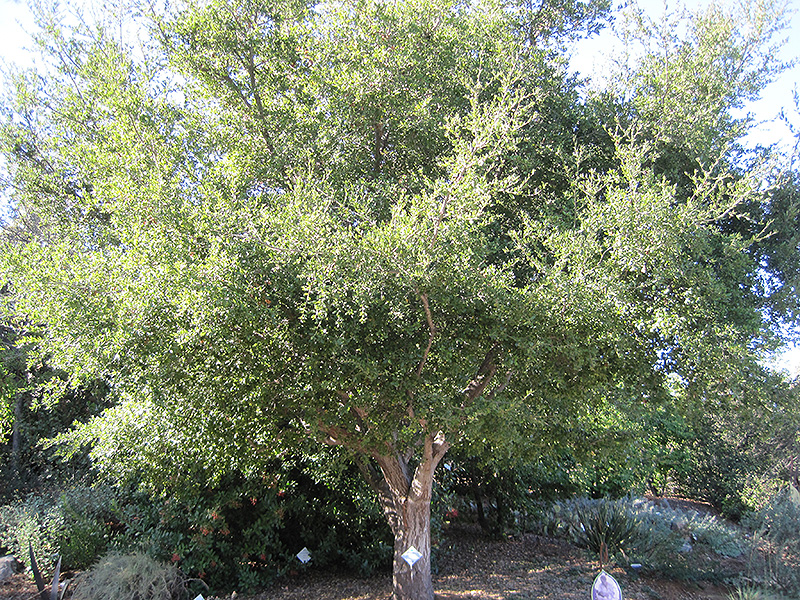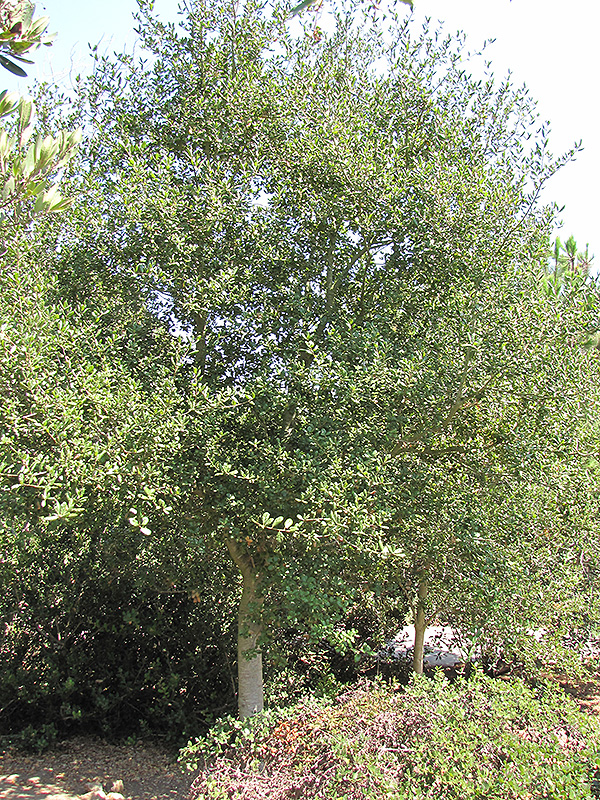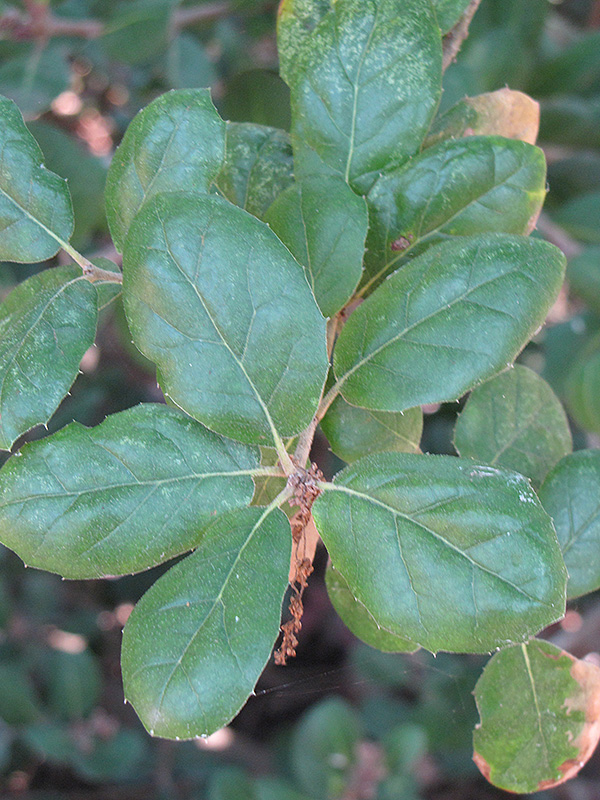Height: 50 feet Spread: 50 feet
Sunlight:
Hardiness Zone: 8a Description: A California native evergreen tree with a well branched, broad rounded habit; foliage is leathery, dark green and glossy; valuable in urban and garden settings as a street or landscape tree; adaptable with low water requirements Ornamental Features Coast Live Oak has attractive dark green evergreen foliage on a tree with a round habit of growth. The glossy oval leaves are highly ornamental and remain dark green throughout the winter. However, the fruit can be messy in the landscape and may require occasional clean-up. The furrowed brown bark adds an interesting dimension to the landscape. Landscape Attributes Coast Live Oak is a dense evergreen tree with a more or less rounded form. Its average texture blends into the landscape, but can be balanced by one or two finer or coarser trees or shrubs for an effective composition. This tree will require occasional maintenance and upkeep, and is best pruned in late winter once the threat of extreme cold has passed. It is a good choice for attracting birds and squirrels to your yard, but is not particularly attractive to deer who tend to leave it alone in favor of tastier treats. Gardeners should be aware of the following characteristic(s) that may warrant special consideration; Coast Live Oak is recommended for the following landscape applications; Planting & Growing Coast Live Oak will grow to be about 50 feet tall at maturity, with a spread of 50 feet. It has a low canopy with a typical clearance of 3 feet from the ground, and should not be planted underneath power lines. It grows at a medium rate, and under ideal conditions can be expected to live to a ripe old age of 150 years or more; think of this as a heritage tree for future generations! This tree should only be grown in full sunlight. It is very adaptable to both dry and moist locations, and should do just fine under average home landscape conditions. It is not particular as to soil type or pH. It is somewhat tolerant of urban pollution. This species is native to parts of North America.![]()
![]()
![]()
![]()
![]()
![]()
![]()
![]()
![]()
![]()
![]()
top of page
Louie's Nursery Menifee - Plant Finder
Characteristics
Applications
Features & Attributes
This tool is an online resource representing many of the varieties that we carry over the course of the season, and is intended for informational purposes only. Inventory varies seasonally, so we cannot guarantee that every plant will be in stock at all times - please contact the store directly for current availability. It does not include our entire selection of plants, so be sure to visit our store to see varieties that may not be represented on this list.
bottom of page


